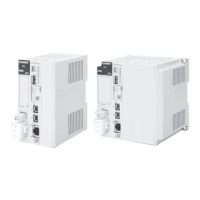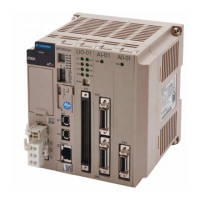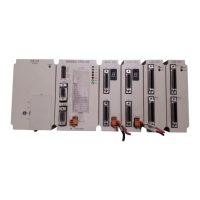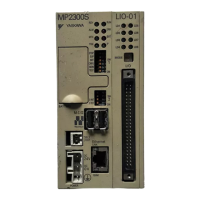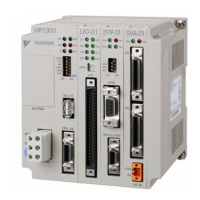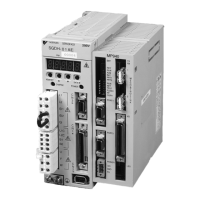4.1 User Program Types and Execution Timing
4.1.5 Registers
4-50
Index Registers (i, j)
There are two special registers, i and j, that are used to modify relay and register addresses.
The functions of i and j are identical. They are used to handle register addresses in registers.
The indices i and j can be expressed in decimal when specified as variables.
We will describe this with examples for each register data type.
Attaching an Index to a Bit Register
Using an index is the same as adding the value of i or j to the register address.
For example, if i = 2, MB00000000i is the same as MB00000002.
Attaching an Index to an Integer Register
Using an index is the same as adding the value of i or j to the register address.
For example, if j = 30, MW0000001j is the same as MW0000031.
Attaching an Index to a Double-length Integer or a Real Number Register
Using an index is the same as adding the value of i or j to the register address.
For example, if j = 1, ML0000000j is the same as ML0000001. Similarly, if j = 1, MF0000000j is
the same as MF0000001.
The data is little endian, as shown in the following example.
• MB00001006
• MW0000100 = 1234 hex
• ML0000100 = 12345678 hex
• MQ0000100 = 123456789ABCDEF0 hex
FEDCBA9876543210Bit
MB00001006
MW0000100
MW0000100 1234 hex
ML0000100
MW0000100
5678 hex
MW0000101
1234 hex
MQ0000100
MW0000100
DEF0 hex
MW0000101
9ABC hex
MW0000102
5678 hex
MW0000103
1234 hex
i = 2;
DB000000 = MB00000000i; DB000000 = MB00000002;
Equivalent
DW00000 = MW0000031;DW00000 = MW0000001j;
j = 30;
Equivalent
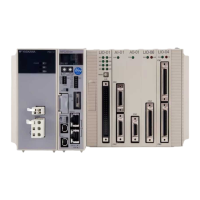
